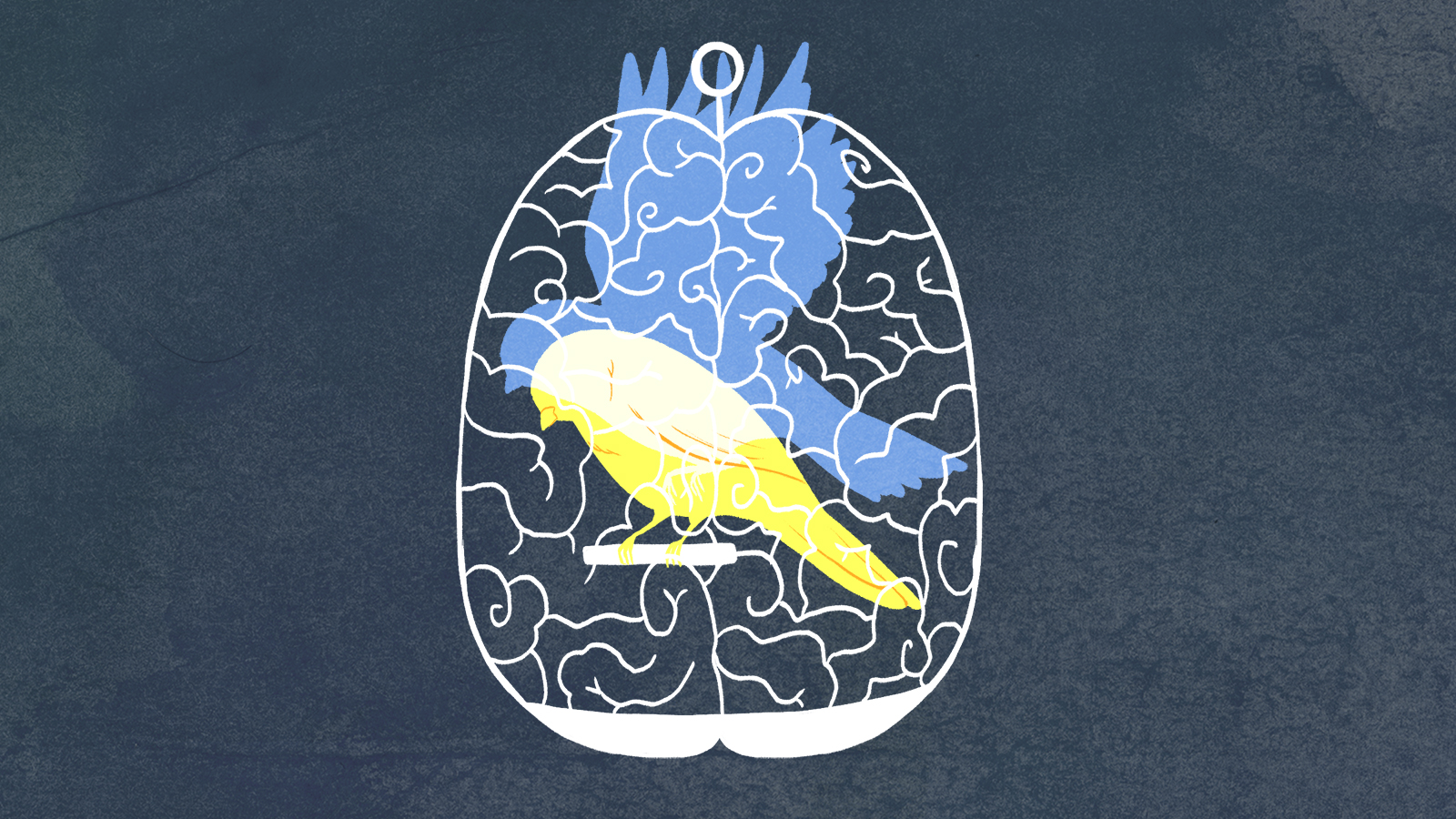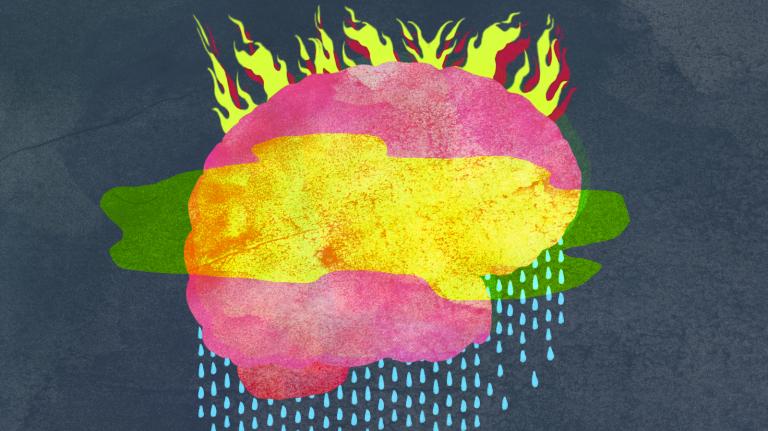… The mind fights the
body and the body fights the land. It wants our bodies,
the landscape does, and everyone runs the risk of
being swallowed up. Can we love nature for what it
really is: predatory? We do not walk through a passive
landscape. The paint dries eventually. The bodies
decompose eventually. We collide with place, which
is another name for God, and limp away with a
permanent injury. …
Siken, War of the Foxes
I called Kathy Selvage because someone had told me she could explain what it was like to lose a mountain. Near her home in Wise County, Va., in the name of the seams underneath, summits are lopped off and King Coal shoves his arms in up to the elbows. Selvage, 66, has watched these ridges atrophy for decades. “It’s a dead zone,” she tells me. “You’re not only being harmed physically. You’re being harmed spiritually. That intimacy with the mountain is gone.”
Mountaintop removal, it’s called; a type of surface mining. Mountaintop removal: a euphemism that whispers of the passive voice. Who removes the mountains? From whom are they being removed? What else are we removing?
It is no secret that times are tough in coal country. For many of the people of West Virginia, of eastern Kentucky, of southwestern Virginia, poverty has always been a synonym for existence. The physical health tragedies of mountaintop removal mining towns have been deeply, grimly reported elsewhere. People are poor. People are sick. You have heard the stories of what the king has done to the land, the towns, the body. Now we are beginning to learn something new: He is also at work on the mind.

I. Loss
Selvage knows about the intimacy of the mountains because she has spent a life living in their shadows. Around the turn of the millennium, she founded Southern Appalachian Mountain Stewards, a community organization dedicated to halting the destruction caused by surface mining and improving the quality of life in the region. Most recently, she was a caretaker for her mother, who passed away last year. “In many ways I grieve for her,” she says. “But I associate the loss of the mountains with grief, too. That probably sounds rather strange, but I think of them as one and the same. I mourn them both.”
Before our conversation, Selvage sends me a photograph of herself in which she’s standing in front of a No Trespassing sign. High-waisted blue jeans and an orange t-shirt, both faded; she is gripping the sign with her right hand. Behind her: stone, cinder blocks, sand, cement. There is a steely stare at the camera. When I ask her about the photo, she explains: “The homeplace where I grew up is under all that rubble.”
Homeplace; one word.
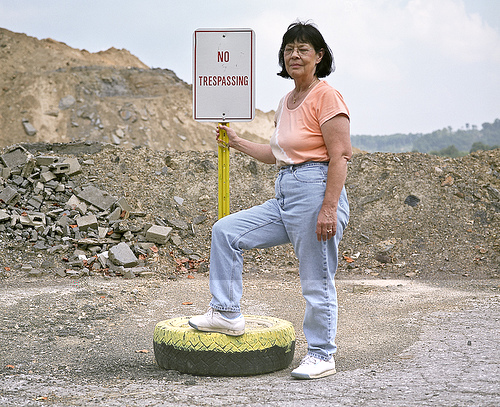
Kathy SelvageMarian Steinert/Evening Star Productions, 2010
There are two things that come up in nearly every conversation I have with people from or familiar with mountaintop removal towns. The first is a strong, immutable sense of place — a connection to the region and to the mountains that this journotourist from pancake-flat Minnesota has little chance of grasping. Selvage’s stories of her childhood are of barefoot stream-wandering, of crawdads and minnows, of fruit trees at the neighbors. They are stories of trips to the mountaintops, berry-picking; of owls, pheasants, and quails. “To have all that demolished, taken away, geographically eradicated? It is one of the most disturbing things. It was the death of the mountain,” Selvage says.
“The homeplace where I grew up is under all that rubble.”
The second thing that comes up in these conversations is the use of rape metaphors for what the coal companies have done to the land.
Over the past decade, mental health professionals and epidemiologists working in Central Appalachia have begun to translate these feelings of spiritual violation into cold, hard research: statistics and case studies bearing academia’s wax seal of approval. Studies that say the violation is real.
In 2012 and 2013, for example, two independent teams of researchers published a pair of articles in Ecopsychology, an academic journal that covers the niche field wedged between its namesakes. The studies painted a new picture of mountaintop removal’s public health crisis: not as one of asthma and cancer and birth defects, but also as one of substance abuse, anxiety, insomnia, and clinical depression.
[grist-related-series]
Compare a mountaintop removal county to another coal-mining county in the region. Even when adjusting for educational status, for socioeconomic outcomes — anything that could potentially skew the results — symptom rates of clinical depression are significantly higher in mountaintop removal mining areas than in other coal-mining areas in the region. This is to say nothing of the elevated rates compared to non-mining towns.
Whatever the reason, people living in mountaintop removal counties are more than one-and-a-half times as likely to exhibit at least moderate depressive symptoms, compared to those in non-mining counties. In a non-mining town in the region, we might expect around 10 people out of 100 to have moderate to severe depression. For mountaintop removal areas, that number is closer to 17 out of 100. The numbers start to add up when you consider that about 2 million people live in the area.
The studies painted a new picture of mountaintop removal’s public health crisis: not as one of asthma and cancer and birth defects, but also as one of substance abuse, anxiety, insomnia, and clinical depression.
Of course, in many ways, studies like this confirm what many residents of Central Appalachia already know: The death of the mountain cuts and scars the people living at its feet. Scars are just easier to see when they’re on the lungs.
“The more traditional biological issues make more sense,” offers Michael Hendryx, an author on the 2013 Ecopsychology study. Hendryx was director of the West Virginia Rural Health Research Center from 2008–2013 and is now a professor of applied health science at Indiana University Bloomington. As he points out, it’s easier to imagine how something like coal dust might be associated with something like asthma. Depression, on the other hand, is less tangible — and not something easily pinned to the aluminum and silica in the air.
But it’s not about air pollution or water quality. “For depression,” says Hendryx, “it seems to be more about the destruction of the environment. It’s that psychological impact of watching mountains blown up and roads destroyed and communities wither away and jobs disappear and politicians lie to you every day about what they’re doing.”
Hendryx’s idea isn’t a new one. Around the same time that Kathy Selvage was founding Southern Appalachian Mountain Stewards, an Australian philosopher named Glenn Albrecht was coining a term that would help describe these feelings of environmental loss and place-based distress. For Albrecht, “solastalgia” was to be contrasted with nostalgia: the pain and yearning that stem not from the passing of better times, but from an altered environment. Albrecht developed the concept — whose name derives from a combination of the Latin word for ‘comfort’ and the root for ‘pain’ — after witnessing the psychological impacts of open-pit mining on local communities in New South Wales. Where surface mines go, solastalgia follows.
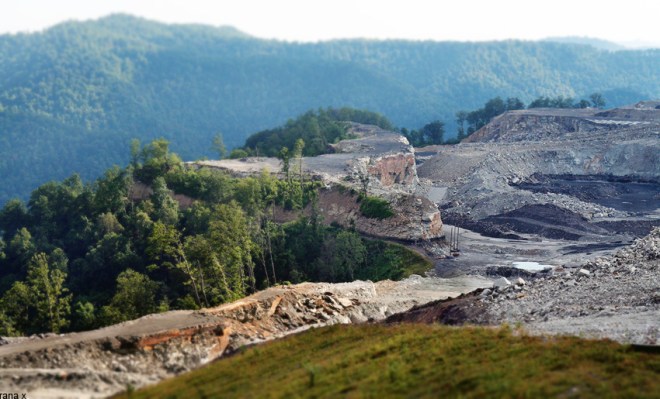
Scenes of mountaintop removal at Kayford Mountain in West VirginiaRana Xavier
Paige Cordial, a clinical psychologist in southwest Virginia and lead author on the other Ecopsychology study, explains the idea like this: “It’s homesickness, but you haven’t left home. You’re homesick because the landscape has changed around you.” Since its inception, the term has also been applied to survivors of natural disasters, as well as to Ghanaian farmers and Inuit communities faced with changing climates and landscapes.
Cordial, who has run the Central Appalachian circuit — originally from West Virginia, she went to undergrad in Kentucky and grad school in southwest Virginia — has also documented anecdotes suggestive of posttraumatic stress disorder in mountaintop removal towns. Frequent blasts and unpredictable floods could, for some, be “acute and severe enough” to lead to PTSD, she writes. She cites the story of West Virginian anti-mountaintop removal activist Bo Webb, who has also spoken out against the psychological effects of surface mining. “I know first hand the mental effects of shell shock,” said Webb in a 2011 interview. “I witnessed it and experienced it in Vietnam. It is evident to me that people living beneath and near this terror are experiencing much the same.”
In their publications, Hendryx and Cordial both zeroed in on solastalgia to help explain the apparent disproportionate spikes in depression rates in surface mining towns. “You can’t really go home,” says Cordial — and that displacement begins to fester. Her doctoral dissertation focused on the psychological impacts of mountaintop removal mining. She recalls the words of one of her interviewees: “Everything just seems so strange. Like a moonscape. Everything that used to be so beautiful: Now it’s just like walking on the moon.”
Biologically, it’s not entirely clear how the death of a mountain and the birth of a moonscape wind up translating into clinical depression. Certainly, it’s infinitely more complicated than the previous sentence suggests. It would also be irresponsible to suggest that all or even the majority of those living in mountaintop removal towns respond this way. Appalachia is already a region painted in broad strokes: as what photographer Roger May recently described as “the last bastion of America that’s sort of generalized, lumped together, and made fun of.” Adding “depressed” to the “celebratory hillbilly” stereotype does nobody any favors.
But for those susceptible, epidemiological evidence does appear to suggest a relationship between mountaintop removal mining and poor mental health and well-being. And at the very least, it’s easy to build a word model of why this might be true. This past October, for example, a team of researchers at Emory University and the Cooperative Institute for Climate and Satellites published a paper spelling out the logic of environmental degradation and mental health outcomes. The causal web is one of “rupture of place bonds, culture change and loss, and altered community and family dynamics,” all of which the public health scientists demonstrate previous research has linked to anxiety and depression.
It’s the kind of logic that rings true to Kathy Selvage. “You’re not just destroying the land,” she says. “You’re destroying the people. You’re not just eradicating the mountain; you’re eradicating a community and its peoples’ history along with it.”

II. Absence
Take a map of the United States and dip your thumb in red paint. From northeast Mississippi all the way to southern New York, smear the color in a lazy Simba stripe, taking care to nick the Carolinas. This is Appalachia. Now mix in a little black to your palette; darken it up. Starting in eastern Kentucky, hook right and dash your thumb upwards through the southwestern tip of Virginia and on into West Virginia. This is mountaintop removal country.
But your map shows more than guillotined mountains: The hot spot in the middle is the peak of a distribution of disadvantage, measured along just about every metric one can measure. On the average, Central Appalachia has more people below the poverty line, greater unemployment, and lower incomes than the rest of the region — which already has more people below the poverty line, greater unemployment, and lower incomes than the rest of the country. Broad strokes, yes, but pigmented with statistical truth.
Undoubtedly, this economic stress (solastalgia notwithstanding) lends itself to poorer mental health. If finger-painting has for some reason triggered a touch of inner-child idealism, though, and you now imagine that your blobs show a proportional concentration of mental health professionals to match the need, you’re wrong. Because you’ve also painted a heat map of one of the most poorly mental-health resourced regions in the nation.
Previous work by Hendryx has shown that 70 percent of rural Appalachian counties have a shortage of mental health care workers — a percentage significantly higher than that of rural counties elsewhere in the same states. A 2009 nationwide study also concluded that many Central Appalachian counties were among those with the highest unmet need for mental health professionals. Seeking out care in coal country is simply harder than it should be.
That’s assuming you actually want to seek the care out in the first place. But that would imply that the broader rural American stigma against mental health treatment doesn’t exist.
Of course, it does; and it doesn’t make the picture any prettier. (This is where the pancake-flat-Minnesota native can relate.) Talking about mental health isn’t something one tends to do in the area. “Let’s say you go to a counselor,” says Cordial. “Everyone knows your car.” That’s a problem, she says, because many people still think that only “crazy” people see counselors or psychiatrists.
In practice, all these swirling structural clouds make the state of the region’s mental health care something of a threefold perfect storm. Economic and environmental stressors lend themselves to higher incidences of drug abuse, anxiety, and depression; a dearth of mental health professionals leaves the need unmet; and the stigma against mental health treatment, combined with what has often been described as a certain fatalism of Central Appalachia, means that plenty of people aren’t interested in seeking out the few available resources in the first place.
It gets worse. Start drinking your paint thinner or something.
In practice, all these swirling structural clouds make the state of the region’s mental health care something of a threefold perfect storm.
Compared to healthy people living in rural areas, rural people in poor mental health are also more likely not to be insured. But where Kentucky’s number of uninsured fell from 20.4 percent pre-Obamacare to 9.8 percent in early 2015, for example, Republican Gov. Matt Bevin announced in January of this year that the state will be dismantling its health insurance exchange. Obama-blaming is big in the region. Coal-blaming is not.
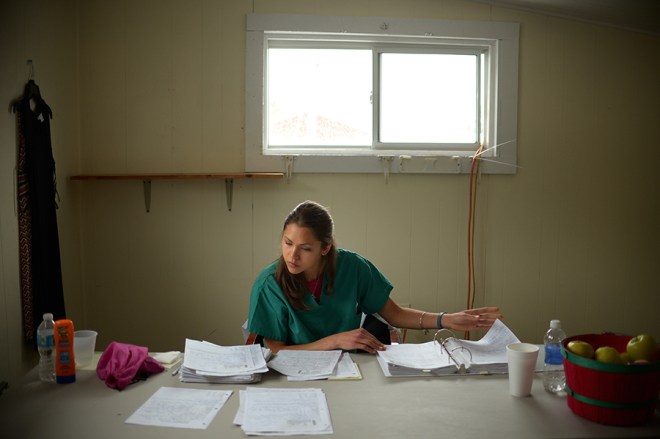
Master of Public Health Carley Hartings organizes volunteers and records in the fairgrounds’ office. Thousands sought free medical, vision and dental care at the Wise County Fairgrounds during the Remote Area Medical (RAM) Clinic on Saturday, July 19, 2014. 2014 was the fifteenth year for the event. Pat Jarrett
“Coal is still big here, but it’s going down fast,” says Cordial. “That makes people even more hesitant to talk about its negative effects.” When an industry’s history is as embedded in a region’s as coal’s is in this one, turning on the industry when it’s in decline would be a little like not calling for help when your stepdad goes into cardiac arrest. Truly conceptualizing the grip that King Coal has on his Central Appalachian subjects is probably outside the scope of this article. Know that it is real and that it is a stranglehold.
“You have this extractive industry that takes what’s valuable and removes it,” says Hendryx. “Almost all of the wealth leaves. It’s the definition of a resource curse.”
When I first called him up to ask him about his research, Hendryx immediately noted that he didn’t begin his work with an axe to grind. That’s a salient point, because the researcher has come under heavy fire from the coal industry for his publications. Just last year, one company spent considerable resources — and filed a lawsuit — to force West Virginia University, where Hendryx was previously based, to hand over thousands of documents related to his research. On the phone, he is a dispassionate shade of incredulous. Of the mining and public health connection, he says, “It was just what I found.”
Says Cordial: “And don’t forget that coal companies have given a lot of money to universities in the region.”
There are many interests aligned in trying to pick up your map and white it all out; aligned in convincing you to forget these sentiments and these stories and these data sets; in embracing that collective amnesia toward Johnson’s failed war on poverty. It’s like that joke that says when you spin the country record backwards, the wife and the dog come back. Except, of course, it doesn’t work that way. The mountains are still dead.
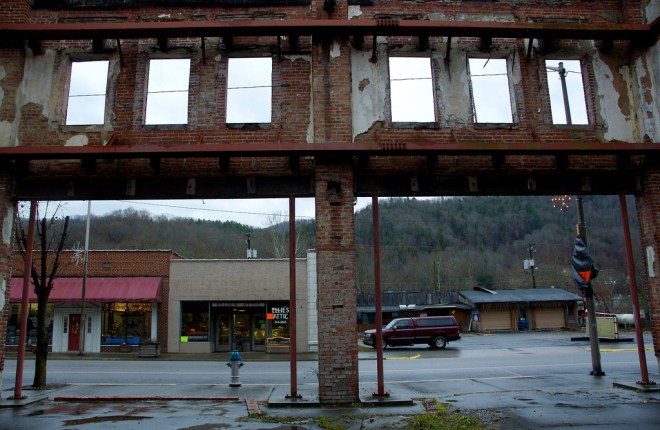
Wise County, Va.biotour13
Selvage recalls her mother seeking solace on her family’s porch over the years, where she would sit each morning with her Bible, alternating between reading and looking out over the landscape. “She should have had that right,” she says. Then the coal trucks came, and with them their dust and the departure of the mountaintops. That solace left with the peaks.
And maybe there is nothing to be done about the loss of the mountains. It took 400 million years to build them. They’re not coming back overnight. Depression, too, is something that is managed, not cured. The erasure of stigma takes decades. Poverty doesn’t just evaporate. No: ‘Progress’ isn’t a word on many lips here. It’s hard to stand on the shoulders of giants when we keep cutting their heads off.

Originally trained as an auditor, Selvage is all business when she talks about the future. “I have never seen a place that has cried out for a strategic plan more than the coalfields of Appalachia,” she says. “Because if we are depressed and unhappy and stagnated and don’t know what to do, then we are not going to appreciate progress. At least until we have something by which to measure it.”
For the rural mental health sector, though, progress is something that can be measured. Progress looks like the expansion of mobile health services. It looks like the expansion of telemental health services, which in turn requires the expansion of broadband access. School-based programs. The development of consistent reimbursement systems for telehealth. Keeping homegrown mental health professionals like Paige Cordial in the region. Maybe there is nothing to be done about the loss of the mountains, but maybe there are new mountains to raise.
‘Hope’ is a complicated word for Selvage, but when she feels it, it’s tucked away in the promise of knowledge creation; in recognition of the problem, in serious planning, in entrepreneurship, in reversing the brain drain she sees in the region. “I do believe that there’s hope for Appalachia, but I don’t believe it can transform itself,” she says.
“We have fired this nation. We have lit this nation. What now can the nation do for us?”

